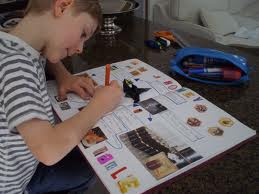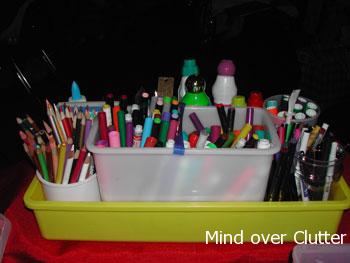Organizing your mind and space for the new school year
Reading time: 7 minutes
 3 Easy Steps
3 Easy Steps
Back to school, I have been procrastinating on dealing with this topic for my blog. Some of you may be feeling the same way about getting ready for school this year. Here are 3 easy steps.
- embrace the normal preparations you have always done,
- plan for new priorities in your child’s routine to make them successful and then
- plan for the new circumstances in your child’s learning situation.
You can’t plan for all circumstances, be ready to adjust.
What will it look like this year
Your child’s school year may have a new look this year.
- Homeschool
- A new teacher
- A new school
- Forest/ outdoor school
- Moving to a new city, school and friends
Normal Preparations
Some things about going back to school don’t change. Start by focusing on the things that are the same as other years to help your child enter this school year without worry. Focus on the differences later. Keeping school preparations “normal” gives your child a sense of security.
Get a few supplies
- Keep your supplies to a minimum. Try having less in the classroom this year. It will be easier for them to keep track of their things. Eight markers instead of 24 or 36, 12 pencil crayons. Wait and see what they need instead of buying everything they might need.
- Use a backpack, pencil case and lunch bag that are vinyl. It makes it easier to wipe off. Have a place to unpack their books and leave their backpacks when they get home.
Set up a station at home to do homework.
- Have a caddy with supplies, scissors, an eraser, a stapler, pens, pencils markers crayons etc. Some children need a space in the middle of the household action. The noise helps them to concentrate and not daydream. The adult equivalent of working in a coffee shop. Other children will need a quiet spot away from distractions.
Plan new priorities in your child’s day to make them successful
Whether your child is in school or learning at home, routines give a sense of stability to a child. Being well-rested, energized and stress-free will make the day of learning fun, enjoyable and exciting in any situation. Don’t make it a big deal make it a new deal.
Start with cleaning up their bedroom
- After a summer of playing, sleepovers, and unstructured play their room may be a mess. Put things back in order so your child has a space to go and relax after school. Everyone needs a place to call their own to get away on their own.
Have good bedtime routines.
- No matter what age your child is, they need an expected time when they are to be in their room and be in bed. Determine routines that help your child to relax and become calm. It will be different for each child. A bath or shower, reading, essential oils, planning for the next day etc. Start the routine at the same time each night.
Morning routines
- Expect your child to get up at the same time each day. This will make going to bed at the expected time easier. Have them make their bed. It will give the room a feeling of calm when they need that space to go and relax. It is hard to relax in a room of chaos. Plan their clothes the night before so they can quickly get dressed. This year, get up and get ready to take on the day.
Focus on good nutrition.
- Make lunches the night before or at breakfast time. Use the lunch bag even if you are homeschooling. Having lunch ready to eat prevents grabbing a quick unhealthy option, it is ready to eat when they are and there is no mess to clean up. Get your child involved in packing the items that don’t need to be refrigerated and putting them in the lunch bag. It can make choices easy if you have a basket of foods they can select from in a specific place. Where will you place them, so the child can get it themselves or higher so you can supervise?
Make exercise or outdoor play essential at the end of the learning day
- Children may be required to stay in their desks more than they are used to. At home, they may be in front of screens for longer periods. When they arrive home or finish learning, get them outside. There may be complaints at first. Make it fun, have a snack outside, read together, talk about your day, play hopscotch, tag, go for a walk, play cards or a board game. No matter what you think you need to get done, nature, fresh air and unstructured movement will help to relax your child. A relaxed child is a happy child and easier to talk with, get to cooperate and hear a laugh.
Manage your child’s new learning circumstances
Now that the basic priorities, for any type of schooling are set up, think about how to manage the new circumstances
Time to listen
Change is difficult. Slow down and listen to their fears and concerns. If you are fearful about the new circumstances they will pick up your concern. Keep yourself calm. Don’t hide your concern, talk about it in a way that is age-appropriate for your child and decide together what you can do to make things less scary. Worry doesn’t help to solve the problem, a plan does.
A day off occasionally?
Some children will be impacted more by all the new expectations. They might need a day off. Discuss how to make the new expectations easier to follow. Think of it as a mental health day.
Reward the small accomplishments
Pointing out success encourages more success. Embracing change, accepting it and conquering your fears is something to celebrate. Celebrate the big and small successes. You may celebrate finishing the day by smiling, helping someone else, overcoming a fear, creating a great story, setting the table, and exercising. It can be anything. Be kind to yourself and treat yourself with compassion.
What do you need for your child’s learning experience?
Research what you need to help with your child’s learning situation. Do you need: course material, babysitting, a learning environment to meet your child’s needs, a weekly chat with the teacher, a play date with school friends? Think about how you can meet your child’s physical, emotional, social and educational needs. You may be able to figure out some solutions before the learning begins, but not everything. Be flexible and change as the situation requires.
A schedule to help set expectations
Some children work best with a schedule. It helps them to know what to expect. Some children don’t do well with surprises. You don’t need to set a very detailed schedule but a general one is helpful. If you homeschool when will learning occur, independently, online, or with a parent? When is unstructured time for your child? Don’t use it as a reward, everyone needs time to relax and rejuvenate. What chores need to be completed? When will homework be done? What time is bedtime?
A pickup routine – washing/ disinfecting hands
If you are picking up your child from school or daycare think about having a way to clean or sanitize their hands before they enter your vehicle. I have a container of water with a lid in my car. When I am done working at a client’s house I wash with soap and water. Some people prefer hand sanitizer or wipes. Insist when they arrive home they wash their hands. Reducing germs means fewer germs come into your home that can make everyone sick.
A great attitude
It is an adventure. Enjoy it. Think outside the box and develop solutions as problems arise. Nothing is too big. Break the problem into smaller parts and solve each part until there is no problem anymore. Make your child resilient. It is the best lesson they can learn.
Accept change, move forward and see how you grow - isn't that what learning is all about Share on X
 Julie Stobbe is a Trained Professional Organizer and Lifestyle Organizing Coach who brings happiness to homes and organization to offices, coaching you virtually using Zoom. She has been working with clients since 2006 to provide customized organizing solutions to suit their individual needs and situations. She uses her love of physical activity to reduce clutter, in your home and office. She guides and supports you in managing your time. If you’re in a difficult transition Julie can coach you to break-free of emotional clutter constraining you from living life on your terms. Online courses are available to help instruct, coach and support your organizing projects. Get started by downloading Tips for Reorganizing 9 Rooms.
Julie Stobbe is a Trained Professional Organizer and Lifestyle Organizing Coach who brings happiness to homes and organization to offices, coaching you virtually using Zoom. She has been working with clients since 2006 to provide customized organizing solutions to suit their individual needs and situations. She uses her love of physical activity to reduce clutter, in your home and office. She guides and supports you in managing your time. If you’re in a difficult transition Julie can coach you to break-free of emotional clutter constraining you from living life on your terms. Online courses are available to help instruct, coach and support your organizing projects. Get started by downloading Tips for Reorganizing 9 Rooms.
Contact her at julie@mindoverclutter.ca
X – Facebook – Facebook group Organizing Mind and Space







So much for parents and students to think about; I’m glad I’m not at that stage! But like so many things, it’s easier when you have a plan, like the ones you’ve outlined here.
I am glad to be passed that stage also. Developing a plan so everyone knows what is happening makes things much smoother in the organization of a home. The big thing in our house was who had to be where at what time and how did they get there and back home. Organizing carpooling can be complicated.
I like how you divided the school preparation ideas into the “normal” and the “new.” By doing the regular routines first, it helps provide continuity and alleviate any fears. Change can be anxiety-producing. So addressing the new things and having a plan, can also help with the transition time.
Our kiddos are adults now, but I have fond memories of helping them get ready for the new school year and the excited anticipation they felt. I also remember that first day being such a strong marker of the passage of time.
Anticipation of that first day of school each year usually causes some anxiety. It shows itself in different ways, more argumentive, trouble sleeping and less hungry. However your child let’s you know about their excitement or dread it is normal and a good thing to talk about.
I’m particularly resonating this morning with the important to rewarding small actions. This isn’t just true for children, but also for adults. Busy parents (and I’ve been one) can forget how much children crave affirmation. Even just phrasing can help: “Remember your backpack” instead of “Don’t forget your backpack.” Keep it as positive as possible!
Thank you for that example of two ways to remind a child about their backpack. A little rephrasing can go along way to make a day brighter.
Great tips for back to school. When my kids were young we’d discuss what time of the day they wanted to do their homework. Each year, before the school year started, I’d let them decide whether they wanted to make homework time as soon as they got home or right after dinner. They choose differently every year and they were allowed to change their minds. But I felt by letting them make that decision they buy into doing what they decided. It worked pretty well.
Thank you for the homework suggestion. If the child makes the decision it is usually easier to make it happen. It also lets them develop time management skills. They need to figure out what is happening in the evenings or afterschool to make the decision about when to do homework. It could be a different time each day.